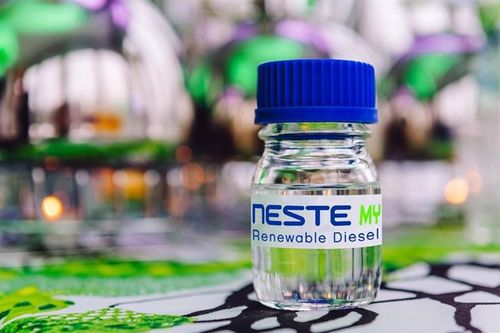Neste welcomes the unrestricted sales allowance of 100%renewable diesel in Germany

SOURCE: Neste Corp.
May 31, 2024
BY Neste Corp.
Neste welcomes the allowance of unrestricted sales of paraffinic diesel fuels according to the DIN EN 15940 fuel standard in Germany. The sales of unblended, 100% renewable diesel (also known as “HVO100”) has previously only been allowed in specific segments, such as in non-road vehicles and public transportation. The approval that has now come into force allows for 100% renewable diesel to be sold and used in all segments in Germany. With this approval, Germany is following other EU countries such as Belgium, the Netherlands, Finland and Sweden in which the sale of 100% renewable diesel at public fueling stations has long been permitted.
"The approval for the sale of 100% renewable diesel at public fueling stations in Germany provides essential regulatory clarity for fuel manufacturers and enables fuel sellers to finally make this lower-emission fuel available to all. This is a milestone on the way towards the urgently needed defossilization of the transport sector, which requires the use of all available solutions," says Jörg Hübeler, from Neste’s Renewable Products Business Development team. "Companies and other organizations with private vehicle fleets and private consumers in Germany can now finally use 100 percent renewable diesel and immediately and significantly reduce the greenhouse gas emissions of their diesel vehicles," says Jörg Hübeler.
By using Neste MY Renewable Diesel™, which is made from 100% renewable raw materials, greenhouse gas emissions (GHG) can be reduced by 75% or 95%* over the life cycle of the fuel compared to fossil diesel. Neste MY Renewable Diesel is fully compatible with all diesel engines and the existing fuel distribution infrastructure. Neste MY Renewable Diesel has a similar chemical composition to fossil diesel, making it a drop-in replacement for the fossil fuel. It can be used neat, i.e. unblended (100% concentration) without the need for any changes in the diesel-powered vehicles or their engines. The use of 100% renewable diesel is widely approved by vehicle and engine manufacturers.
*) The GHG emission reduction varies depending on the region-specific legislation that provides the methodology for the calculations (e.g. EU RED II 2018/2001/EU for Europe and US California LCFS for the US), and the raw material mix used to manufacture the product for each market.
Advertisement
Advertisement
Related Stories
The U.S. EPA on July 8 hosted virtual public hearing to gather input on the agency’s recently released proposed rule to set 2026 and 2027 RFS RVOs. Members of the biofuel industry were among those to offer testimony during the event.
The U.S. exported 31,160.5 metric tons of biodiesel and biodiesel blends of B30 and greater in May, according to data released by the USDA Foreign Agricultural Service on July 3. Biodiesel imports were 2,226.2 metric tons for the month.
The USDA’s Risk Management Agency is implementing multiple changes to the Camelina pilot insurance program for the 2026 and succeeding crop years. The changes will expand coverage options and provide greater flexibility for producers.
President Trump on July 4 signed the “One Big Beautiful Bill Act.” The legislation extends and updates the 45Z credit and revives a tax credit benefiting small biodiesel producers but repeals several other bioenergy-related tax incentives.
CARB on June 27 announced amendments to the state’s LCFS regulations will take effect beginning on July 1. The amended regulations were approved by the agency in November 2024, but implementation was delayed due to regulatory clarity issues.
Upcoming Events










